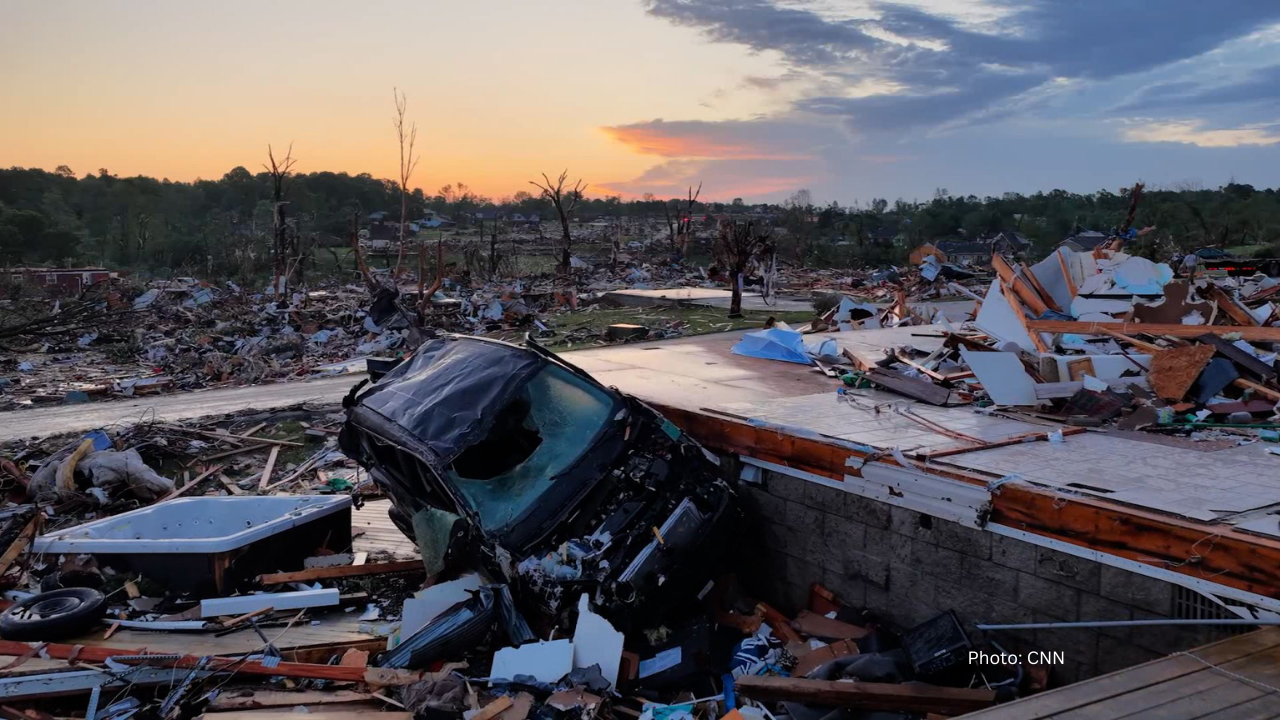Climate Disruptions and the Shifting Landscape of Global Stability
Roman Uddin | 25 May 2025
Climate phenomena are increasingly shaping the contours of international politics, diplomacy, and global security. While traditionally viewed as an environmental or scientific issue, climate change has emerged as a fundamental driver of instability and a central factor in the peace and conflict dynamics of the 21st century. It is no longer feasible to isolate climate from broader geopolitical analysis. The weather anomalies and extreme climate events of May 2025 illustrate with sobering clarity the intensifying relationship between atmospheric disruption and global governance challenges.
During May 2025, the world experienced one of its most climatically volatile months on record. According to the Copernicus Climate Change Service, it was the second-warmest May ever documented, trailing only behind May 2024. This was not merely an environmental milestone but a global signal, one that affects food systems, migration patterns, energy security, and the diplomatic agendas of states. The boreal spring (March to May) was similarly ranked as the second-warmest for the Northern Hemisphere, a pattern that aligns with long-term warming trends driven by persistent increases in greenhouse gas concentrations.
The international ramifications of such climatic shifts are not abstract. On May 15–16, the central and southeastern United States experienced a deadly and expansive tornado outbreak, with over 60 confirmed tornadoes including multiple EF4-rated events. These storms, characterized by wind speeds reaching up to 190 miles per hour, left at least 26 dead and inflicted widespread infrastructural damage across multiple states. From a meteorological standpoint, this outbreak was intensified by a combination of heightened surface temperatures, anomalously warm sea surface temperatures in the Gulf of Mexico, and high levels of convective available potential energy (CAPE). Yet beyond the science lies a broader political question: how prepared are states, individually and collectively, to manage the compounded effects of such disasters?
The humanitarian toll and infrastructural collapse resulting from extreme weather have significant implications for state capacity and legitimacy. When natural disasters strike, particularly in regions with pre-existing socio-economic vulnerabilities, the result can be political unrest, forced displacement, and resource conflict. The international system is increasingly recognizing these links. The United Nations Security Council has, in recent years, debated the role of climate change as a "threat multiplier", an intensifier of underlying tensions that can catalyze conflict or exacerbate existing crises. In this light, May’s weather extremes are not only natural events but political triggers.
Global diplomacy is already grappling with the burdens of climate-driven disruption. Countries most vulnerable to these changes, particularly in the Global South, are demanding greater accountability and financial assistance from historically high-emitting states. At the core of these negotiations is the principle of climate justice, which acknowledges the disproportionate impact of global warming on those least responsible for its causes. The deadly events of May added urgency to this discourse. In the wake of the tornado outbreak, conversations within international forums such as the UNFCCC and G7 began to reemphasize the need for robust adaptation financing, disaster risk reduction, and technology transfer mechanisms.
The scientific characteristics of this evolving climate reality further complicate the diplomatic terrain. The intensification of the hydrological cycle, rising ocean heat content, and changing jet stream behavior, linked to polar amplification, are all contributing to the unpredictability and extremity of weather systems. The scientific community is warning that these are not episodic anomalies but indicative of a new climate regime.
Such knowledge must inform global governance. Diplomacy in the age of climate change requires an interdisciplinary lens, integrating meteorological data, conflict analysis, and development planning. The frequency of extreme events like those in May 2025 makes it clear that climate resilience is not merely a domestic concern but a matter of collective security. International relations theory must also evolve. Realist paradigms, focused narrowly on military power and territorial sovereignty, fall short in addressing non-traditional threats like climate-induced instability. Instead, cooperative frameworks and multilateral approaches are necessary to navigate the complex interdependencies exposed by climate extremes.
At the heart of these transformations lies the question of global responsibility. As emissions continue to rise, CO₂ concentrations reached a record 423 ppm at Mauna Loa in May, efforts to mitigate further warming remain insufficient.
May 2025 stands not just as a record-breaking month for temperatures and storms, but as a critical juncture for international political awareness. It reminded global actors that climate change is not a distant environmental issue but a present and escalating factor in diplomacy, security, and development. For scholars and practitioners of peace and conflict studies, this recognition must guide future inquiry and policy design. As climate volatility becomes a permanent feature of the international landscape, the institutions of global governance must adapt, or risk being overwhelmed by the very forces they seek to manage.
Roman Uddin is a Research Associate at Centre for Governance Studies (CGS)
Disclaimer: Views in this article are author’s own and do not necessarily reflect CGS policy
